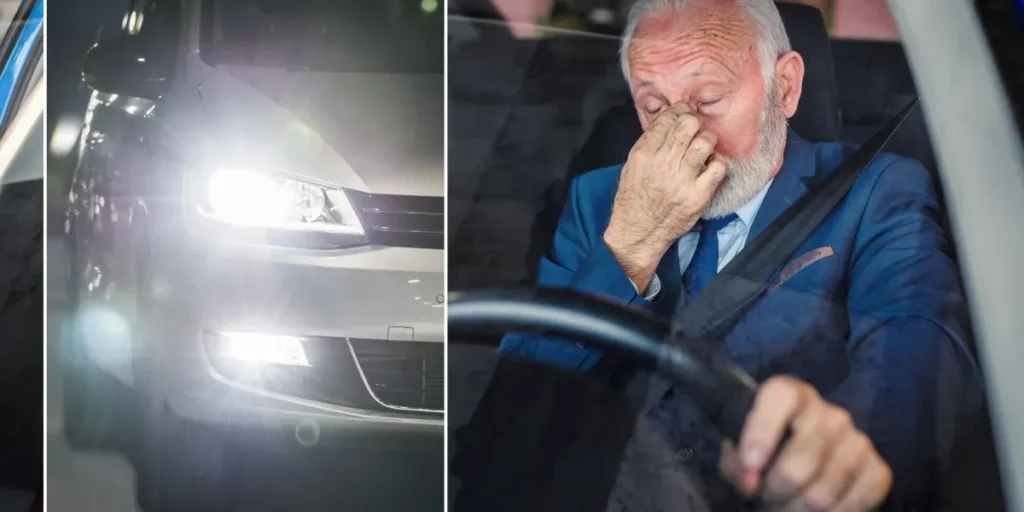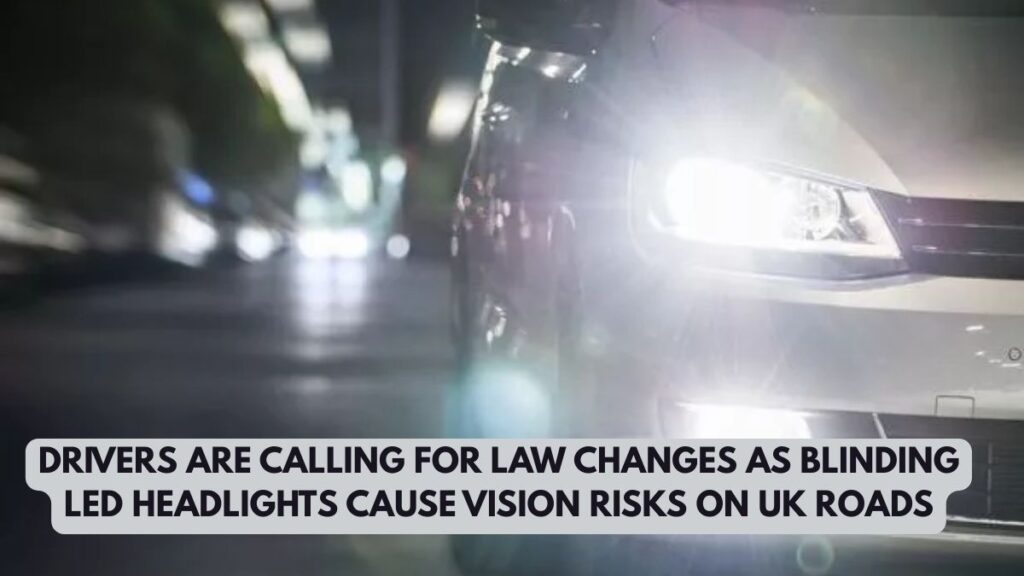The British government is considering changes to vehicle lighting laws as an overwhelming number of motorists report being blinded by excessively bright LED headlights—a problem experts warn can lead to temporary vision impairment and road accidents.
A recent RAC survey revealed that 91% of UK drivers have experienced dazzling from other vehicles’ headlights, while 85% admitted the intensity of the glare temporarily impaired their vision. The issue is especially dangerous for older drivers, who are more prone to eye strain and slower recovery from glare exposure.
“Even a few seconds of impaired vision can be dangerous when driving at high speeds,” said Dr. Deborah Lee of Dr Fox Online Pharmacy. “Older individuals and those with eye conditions are particularly vulnerable.”
(Source)
Why Are Headlights Getting Brighter?

The shift to LED (Light Emitting Diode) technology has drastically changed nighttime driving. LEDs are more energy-efficient and longer-lasting than halogen bulbs, but they often emit a more intense, blue-tinged light that can be blinding to oncoming traffic.
Additionally, the increasing popularity of SUVs and larger vehicles has compounded the problem. These vehicles often have headlights positioned higher than standard cars, directing light directly into the line of sight of other drivers.
“With taller vehicles on the road, the height of headlights means more direct exposure to other drivers,” a Department for Transport (DfT) spokesperson said.
Government Response and Research Trials
In October 2024, the DfT commissioned the Transport Research Laboratory (TRL) to conduct a comprehensive study into headlight glare and its effects on motorists. The trial seeks to identify causes and develop strategies to mitigate the problem.
The TRL’s research may lead to:
- Setting maximum brightness levels
- Mandating beam alignment standards
- Encouraging or requiring Adaptive Driving Beam (ADB) systems
What Is Adaptive Driving Beam (ADB) Technology?
ADB systems allow vehicles to automatically adjust their headlights based on the presence of other vehicles—dimming in specific areas to prevent dazzling without reducing overall road illumination.
While approved in the United States since 2022, ADB technology has been slow to roll out in Europe and the UK due to homologation (regulatory compliance) delays. The National Highway Traffic Safety Administration (NHTSA) in the US has already implemented policies to accommodate ADB in new vehicles.
Advocacy and Public Campaigns
Advocacy groups like the Soft Lights Foundation have been vocal in pushing for tighter restrictions on headlight intensity. They argue that without regulatory intervention, LED glare could lead to more nighttime pedestrian fatalities and rear-end collisions.
“LED lights were never tested for human safety in this way. Drivers and pedestrians alike are paying the price,” said a Soft Lights Foundation representative.
Expert Opinion: A Public Health and Safety Issue
Many ophthalmologists and optometrists support regulation. They highlight that the human eye naturally struggles to adjust from bright to dark, making intense headlights a serious health hazard, especially during twilight or rainy conditions.
What’s Next for Drivers?

Although no new law has been passed yet, experts anticipate that the results from TRL’s study will be used to inform updated lighting regulations under UK Road Vehicle Lighting Regulations 1989, which could include:
- Maximum permissible lumens for headlights
- Beam angle requirements
- Mandatory ADB for all new vehicles
Any changes would likely be implemented in phases, giving manufacturers time to adjust and allowing vehicle owners to comply with minimal disruption.
What Can You Do Now?
While waiting for legal reforms, drivers can:
- Avoid high beams unless necessary
- Adjust headlight angle if driving an SUV or truck
- Get regular eye checkups, especially if night vision is deteriorating
- Report blinding headlights to your local DVLA or report unsafe vehicles
As concerns rise, this growing chorus of voices—from drivers to researchers to advocacy groups—is placing increasing pressure on lawmakers to act swiftly. The goal is clear: enhance road safety by ensuring that seeing and being seen does not come at the cost of driver health.
This article has been carefully fact-checked by our editorial team to ensure accuracy and eliminate any misleading information. We are committed to maintaining the highest standards of integrity in our content.

Himanshu Sharma writes for Weekend Spy, focusing on recruitment, government schemes, and current affairs. He is dedicated to making complex information accessible to readers.
Himanshu enjoys playing chess, hiking, and trying new recipes, always seeking ways to combine his love for writing with his passion for exploration. Connect with Drop him an email at [email protected].







